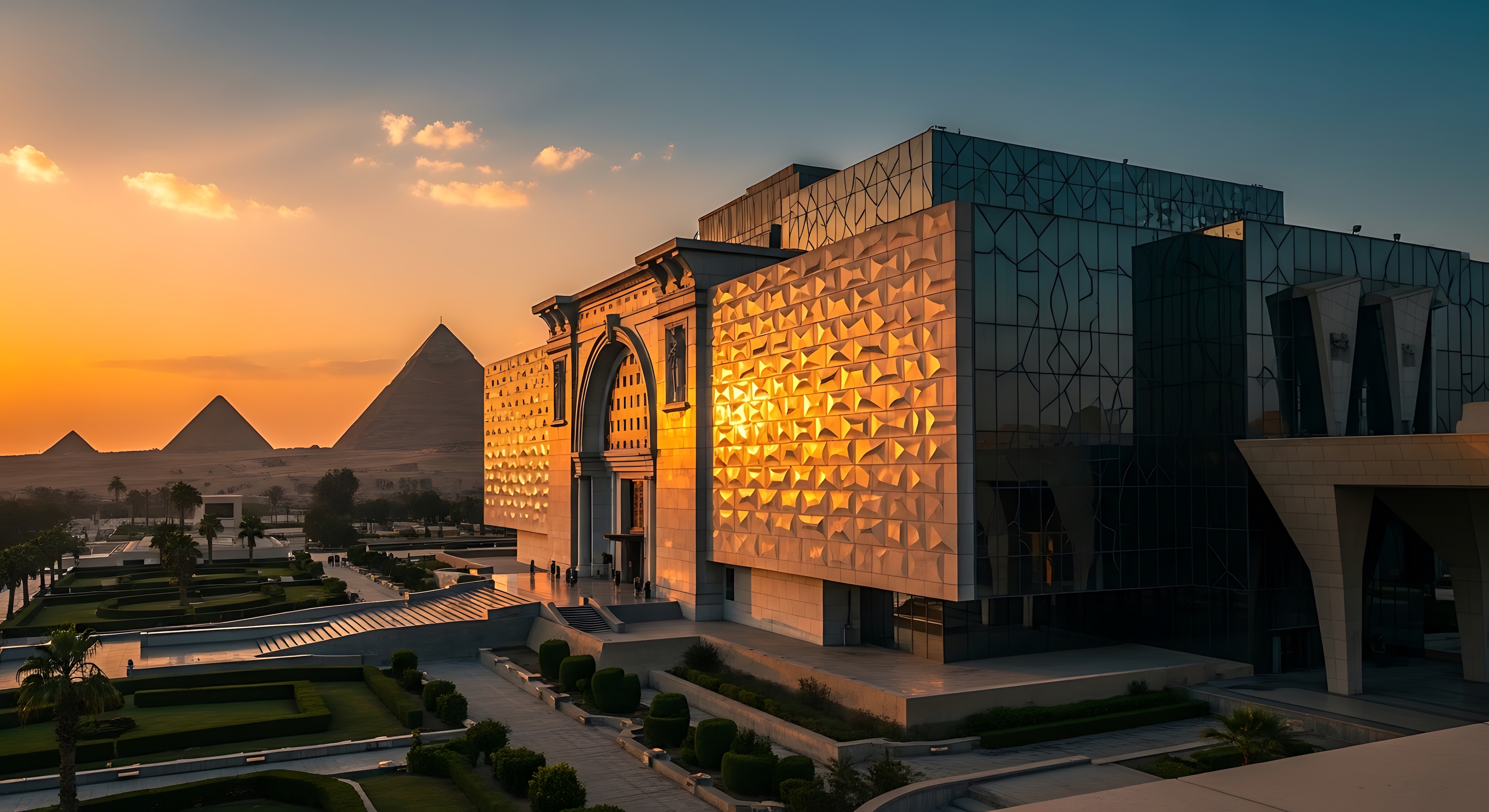
Egypt inaugurated its largest museum amidst widespread optimism for positive economic repercussions, particularly on the economy, the tourism sector, and the hotel industry. What is the economic significance of the Grand Egyptian Museum? What distinguishes it?
More than two billion people worldwide watched the opening ceremony of the Grand Egyptian Museum on November 1, with expectations that the event would showcase Egypt's cultural heritage and promote it as a prominent tourist destination on the international map. This prompted the government to plan opening ceremonies for the Grand Egyptian Museum that would "dazzle the world," according to Prime Minister Mostafa Madbouly.
This domestic interest was accompanied by extensive promotion through Egyptian embassies abroad and a partnership with TikTok, which broadcast the ceremony live to a global audience. This coincided with confirmation from approximately 40 presidents, kings, and heads of government that they would attend the event in Cairo, making it unprecedented in terms of international participation and global media attention, according to the Egyptian government spokesperson.
What is the economic significance of the Grand Egyptian Museum?
Magdy Sadek, a board member of the Chamber of Tourism Companies and the General Division of Investors, says that hotel occupancy rates are experiencing a significant surge, ranging from 90 percent to 100 percent, coinciding with the start of promotional activities for the Grand Egyptian Museum's opening ceremony. Sadek noted that the media attention and the presence of delegations at the presidential and royal levels are promoting Egypt globally and increasing tourist demand.
According to Sadek, the Grand Egyptian Museum will be a major catalyst for a hotel boom in the region, coinciding with the government's approval of the Holiday Home Law, which allows citizens to renovate their apartments and rent them out as boutique hotels, offering an alternative to large hotel chains.
The Chamber of Tourism Companies member also urged the government to exempt eligible citizens from taxes for five years as an investment incentive to renovate their homes and transform them into small hotels.
In this context, the Ministers of Finance and Tourism issued a joint statement on October 29th – two days before the museum's opening ceremony – extending the deadline for the EGP50 billion financing initiative for an additional six months. To increase hotel capacity to accommodate the targeted annual increase in tourists visiting Egypt, the state treasury will bear the interest rate differential, responding to the desire of companies and investors to complete their projects.
Tourism industry experts also expect total inbound tourism to Egypt to exceed 18 million tourists this year (2025) after the opening of the Grand Egyptian Museum, an increase from last year's 15.7 million tourists, representing a 13.12 percent rise. They anticipate that this number could reach approximately 25 million tourists next year (2026).
In a recent report published last October, Fitch Ratings predicts that the full operation of the Grand Egyptian Museum will provide a significant boost to Egypt's tourism sector, with the potential to attract around 5 million visitors annually. This is in addition to the projected increase in tourism revenues from USD17.1 billion in 2025 to USD19 billion in 2029.
According to government data, the tourism sector's contribution to Egypt's GDP reached 3.7 percent during the 2024-2025 fiscal year. The country aims to attract 30 million tourists by 2031, relying on the Grand Egyptian Museum and other archaeological and cultural projects.
After years of instability, Egypt's tourism sector, which employs approximately 10 percent of the country's workforce, has begun to recover. In the 2023-2024 fiscal year, tourism revenues reached USD 14.4 billion, a 34.6 percent increase compared to the previous year.
Around 15 million tourists visited Egypt in the first nine months of 2025, generating USD12.5 billion in revenue, a 21 percent increase compared to the same period last year.
What makes the Grand Egyptian Museum unique?
The Grand Egyptian Museum is the third Egyptian museum established, after the Small Egyptian Museum in Tahrir Square in downtown Cairo and the National Museum of Egyptian Civilization in Fustat area. However, it is the largest of them all, and according to the Egyptian government, it is the largest archaeological museum in the Middle East and Africa, and the largest museum dedicated to a single civilization worldwide.
The Grand Egyptian Museum spans 490,000 square meters and features a main entrance covering approximately 7,000 square meters, displaying a statue of King Ramses II. It houses around 100,000 artifacts, 57,000 of which are
on display, narrating the history of Egypt throughout the ages. In addition, there is the Grand Staircase, which extends over an area ofapproximately 6,000 square meters, reaching a height equivalent to six stories.
The museum also includes 12 main exhibition halls covering approximately 18,000 square meters, temporary exhibition halls covering approximately 1,700 square meters, and halls dedicated to displaying the treasures of King Tutankhamun, covering an area of approximately 7,500 square meters. These halls contain 5,398 artifacts from the king's tomb, displayed together for the first time.
Photo: Grand Egyptian Museum exterior at sunset (by Adobe).